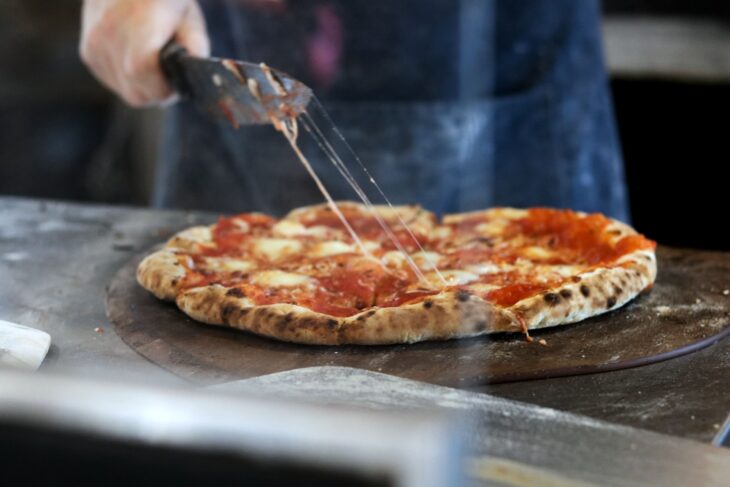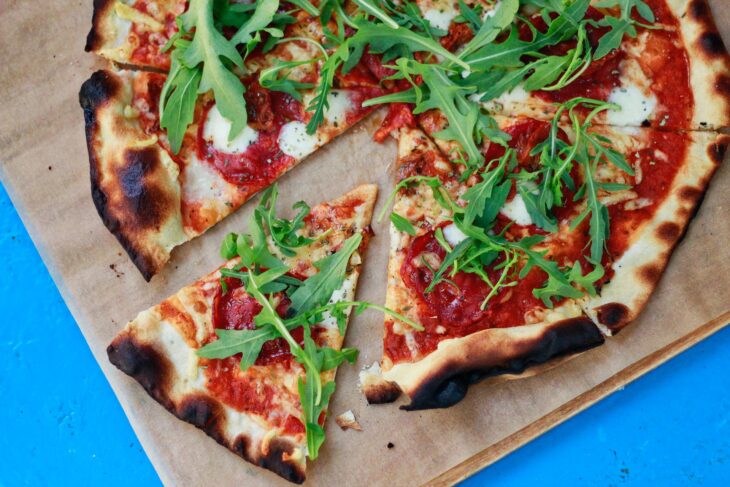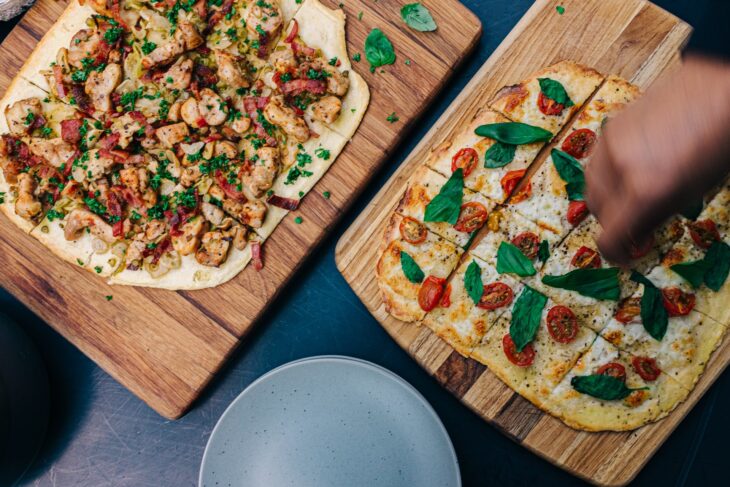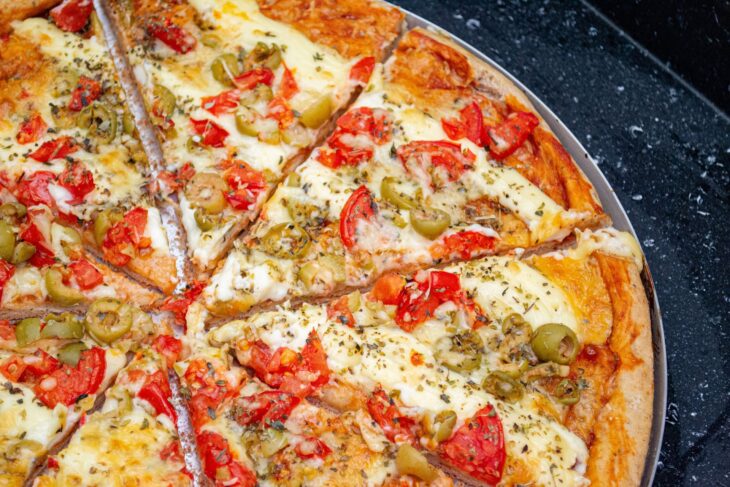You probably already know that there’s a variety of cutting boards for different products. But what about pizza boards? Well, the debate between pizza makers is hot too! At pizzaovenradar.com, I like having an objective view on any subject, so I decided to weigh all the pros and cons of both pizza board types. Let’s do it the simple way and compare plastic and wooden boards by their pros and cons.
Contents
Size and Shape

Image source: unsplash.com
Both wooden and plastic pizza cutting boards can be of any size. You should choose the one that’s slightly bigger than the diameter of the pizza you bake. The edges of the board should be broad enough to let you carry it conveniently and prevent the slipping of pieces during cutting. You can either opt for a classic round pizza board, a round board with a handle, or get a rectangular board of the right size with or without a handle. Now, let’s take a look at the materials.
Wooden Board Benefits
Quality wooden pizza boards offer excellent durability. I think some of them can last a lifetime if you stick to the exploitation rules. Wood can survive accidental burns and deep cuts. Moreover, you can simply sand them away. Artificial materials rarely survive damage. For example, if you put a cutting board into the oven by accident, it won’t melt or burn right away. You will have a few minutes to take it out without serious damage. WoodworkingClarity has explored some of the best wood for cutting boards that are not only food safe but durable.
Tender to knives

Image source: unsplash.com
Unlike plastic and hardwood, such as bamboo, boards made of walnut, maple, and similar woods can make cutting a real pleasure. But what’s more important, these woods are gentler on knives than other materials. Technically, maple and walnut are also hardwoods, but they’re soft enough not to damage your knives.
Hygienic
You may assume that wood is unsanitary as it’s very porous and can absorb liquids. Fortunately, this isn’t true. NC State University food safety researcher Ben Chapman says that woods like maple and walnut are fine-grained, which lets them pull down liquids and capture bacteria inside. When the board dries, the bacteria is killed by the structure of the material. Softer woods like cypress are less likely to fight bacteria as their grains are much bigger and can split apart easier.
Another study by the Journal of Food Protection found that the self-clearing process usually takes from 3 to 10 minutes after contamination. If your pizza leaves stains of meat grease on the board, you should remove them with warm soapy water. But don’t ever clean a wooden pizza cutting board in the dishwasher as it will damage the structure of wood and make it unsustainable to bacteria. Treat it with care manually, and it will serve for years.
Aesthetics

Image source: unsplash.com
Of course, the characteristics of the material are much more important than its appearance, but who doesn’t like the look of natural wooden patterns? Wooden boards are definitely prettier than plastic ones, so they’re recommended to fans of stylish kitchen solutions and authentic pizza-making gear.
Wooden Board Downsides
Wood is an excellent material, but it’s not flawless. First of all, you should condition it with food-grade mineral oil. Otherwise, the board will be more exposed to warping, cracking, and drying out. Oil can also prevent staining by reducing the soaking ability of the material.
Quality wooden boards are also quite heavy. If you don’t want your pizza cutting board to warp soon, take a thick one. If you cannot carry a heavy wooden board, opt for a plastic one then.
Plastic Pizza Board Benefits

Image source: unsplash.com
The first thing that usually persuades avid pizza makers to buy a plastic board is its relatively low price. Plastic boards are usually significantly lighter and take less space. Due to this, you can easily fit 2-3 plastic pizza boards into storage that allows only a single wooden board.
What’s more important, you don’t have to wash it manually and condition it with wood-grade oils. It’s usually enough to put it into the washing machine and enjoy doing something else instead of washing it manually. This practical benefit outweighs very often. If you like making pizzas with some greasy meat or fish, which are risky products, a plastic board is a more convenient option.
Plastic Board Cons
High-quality plastic boards are claimed to be gentle to the pizza knives. However, they lead to faster blunting than maple boards. No matter how good the plastic is, it will wear your knives down much faster. That’s not what you’d want to happen if you are not an occasional pizza maker with a plastic knife.
Such boards are also more exposed to scratches, which makes them a perfect habitat for bacteria. Not that it makes plastic boards more dangerous, but they can get dinged-up faster than wooden boards. The scratches usually accumulate tiny pieces of grease, and the contaminated areas get dark quite soon. Plastic boards are made to be replaced as soon as they get a dinged-up look, so the financial benefit is quite arguable.
What’s Yours?
Wooden pizza cutting boards are a classic solution. They have an authentic appearance and can make any table look much more delicious. Yes, they require specific care routines, but that’s nothing when you understand how long your board can remain fresh and stylish.
Plastic offers more practical benefits, and it’s definitely much easier to carry. Unlike wood, high-quality plastic lets you get rid of greasy contaminations of the surface easier. On the other hand, it can be impossible to remove grease from inside the scratches. As a result, these boards don’t serve as long as wooden ones.
Pizza cutting boards are very similar to mattresses – you shouldn’t underestimate the importance of purchasing a high-quality item if you don’t want to waste your money. The characteristics of the board and its longevity are crucial. Use the knowledge from this article to make a considered decision and enjoy cutting delicious pizza on a propper surface. Both materials have a chance to satisfy you, so consider your needs above recommendations. For more pizza-making tips, visit pizzaovenradar.com.
